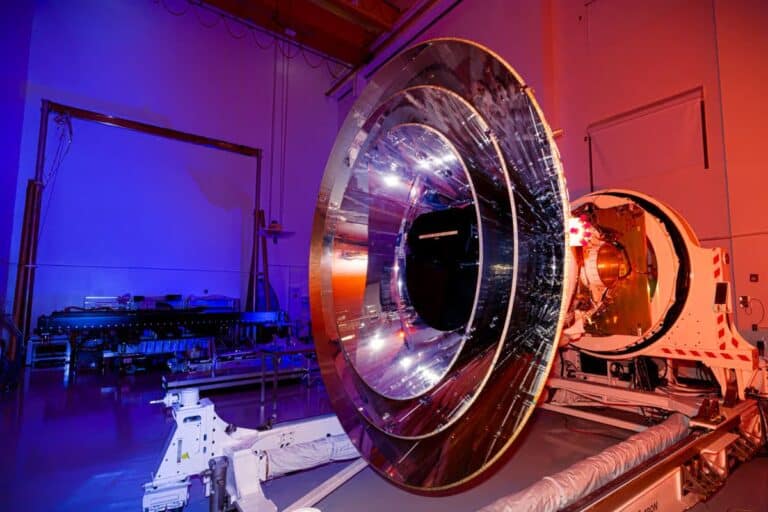
NASA is launching a $488 million mission with its new telescope, which is expected to provide a lot of data.
How did your country report this? Share your view in the comments.
Diverging Reports Breakdown
NASA is launching a $488 million mission with its new telescope, which is expected to provide a lot of data.
NASA’s ambitious SPHEREx telescope project represents a significant leap forward in our understanding of the cosmos. With a price tag of $488 million, this revolutionary instrument is designed to create an unprecedented three-dimensional map of our universe. Over its two-year mission, the device will methodically scan the entire sky twice annually, capturing detailed images of different space regions. This systematic approach will allow scientists to analyze over 450 million galaxies and 100 million Milky Way stars with unprecedented detail. By mapping the distribution patterns of hundreds of millions of galaxies, scientists hope to identify signatures from the universe’s earliest moments. This data could fundamentally transform our understand of how the universe formed and why it appears as it does today. The mission could potentially identify water sources throughout our solar system and beyond, offering clues about the origins of Earth’s water and the potential habitability of other worlds.
Revolutionary mapping technology unveils cosmic mysteries
The SPHEREx telescope employs cutting-edge technology to observe wavelengths invisible to human eyes. Over its two-year mission, the device will methodically scan the entire sky twice annually, capturing detailed images of different space regions. This systematic approach will allow scientists to analyze over 450 million galaxies and 100 million Milky Way stars with unprecedented detail.
“SPHEREx demonstrates how big science can be accomplished with a relatively small telescope,” explained Beth Fabinsky, deputy project manager at NASA’s Jet Propulsion Laboratory. Despite its modest size—weighing about 500 kilograms, less than a grand piano—the telescope operates efficiently on just 270-300 watts of power, less than a standard refrigerator consumes.
The telescope’s spectrophotometer splits light into 102 distinct colors, enabling detection of frozen molecules essential for life within interstellar clouds. This capability allows researchers to track how fundamental elements like hydrogen, carbon, and oxygen move through space before reaching planetary systems. Such insights might prove valuable for future space exploration, including understanding mysterious deep space phenomena that have puzzled astronomers for decades.
Tracing cosmic inflation and universe formation
A primary objective of the SPHEREx mission involves studying cosmic inflation—the rapid expansion that occurred moments after the Big Bang. By mapping the distribution patterns of hundreds of millions of galaxies, scientists hope to identify signatures from the universe’s earliest moments. This data could fundamentally transform our understanding of how the universe formed and why it appears as it does today.
The telescope’s capabilities extend beyond just mapping. Its instruments will analyze stars that other telescopes cannot detect due to size or distance limitations. This comprehensive approach promises to deliver insights about how galaxies form and evolve throughout cosmic time. The mission builds upon discoveries made by other NASA observatories like the James Webb Telescope, which recently observed chaotic light shows from our galaxy’s central black hole.
James Fanson, SPHEREx project manager, expressed excitement about the mission’s potential: “I expect the unexpected to come out of the data for this mission.” This sentiment reflects how transformative the telescope’s observations could be for our cosmic understanding.
Building blocks of life across the universe
SPHEREx’s unique instrumentation allows it to detect frozen molecules that serve as building blocks for life. By analyzing elements such as nitrogen, oxygen, carbon, and sulfur, scientists can trace how these essential ingredients travel through interstellar space and eventually reach planets.
This capability may prove crucial in identifying environments capable of supporting life beyond Earth. The mission could potentially identify water sources throughout our solar system and beyond, offering clues about the origins of Earth’s water and the potential habitability of other worlds. Some astronomers speculate that these observations might even contribute to the search for our solar system’s theorized ninth planet, which has eluded detection despite compelling evidence for its existence.
While mapping countless galaxies, SPHEREx might also provide new data about cosmic phenomena like massive black holes moving through space. The telescope’s ability to capture comprehensive spectral data across vast cosmic distances makes it uniquely suited to detect anomalies and unexpected features throughout the observable universe.
With its innovative design and ambitious goals, the SPHEREx telescope exemplifies NASA’s commitment to pushing scientific boundaries. The treasure trove of data it produces will keep astronomers busy for decades, potentially answering fundamental questions about our cosmic origins while inevitably raising fascinating new ones.
